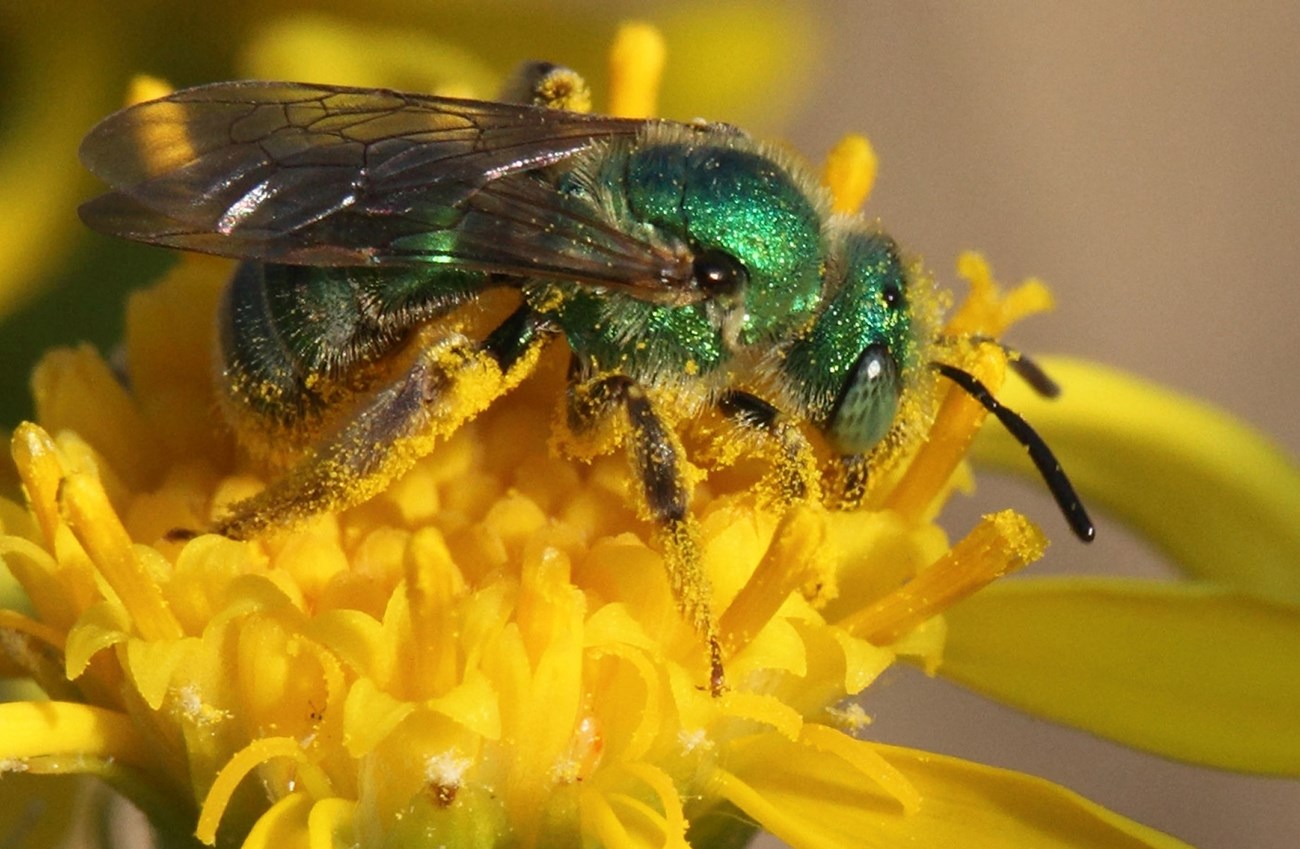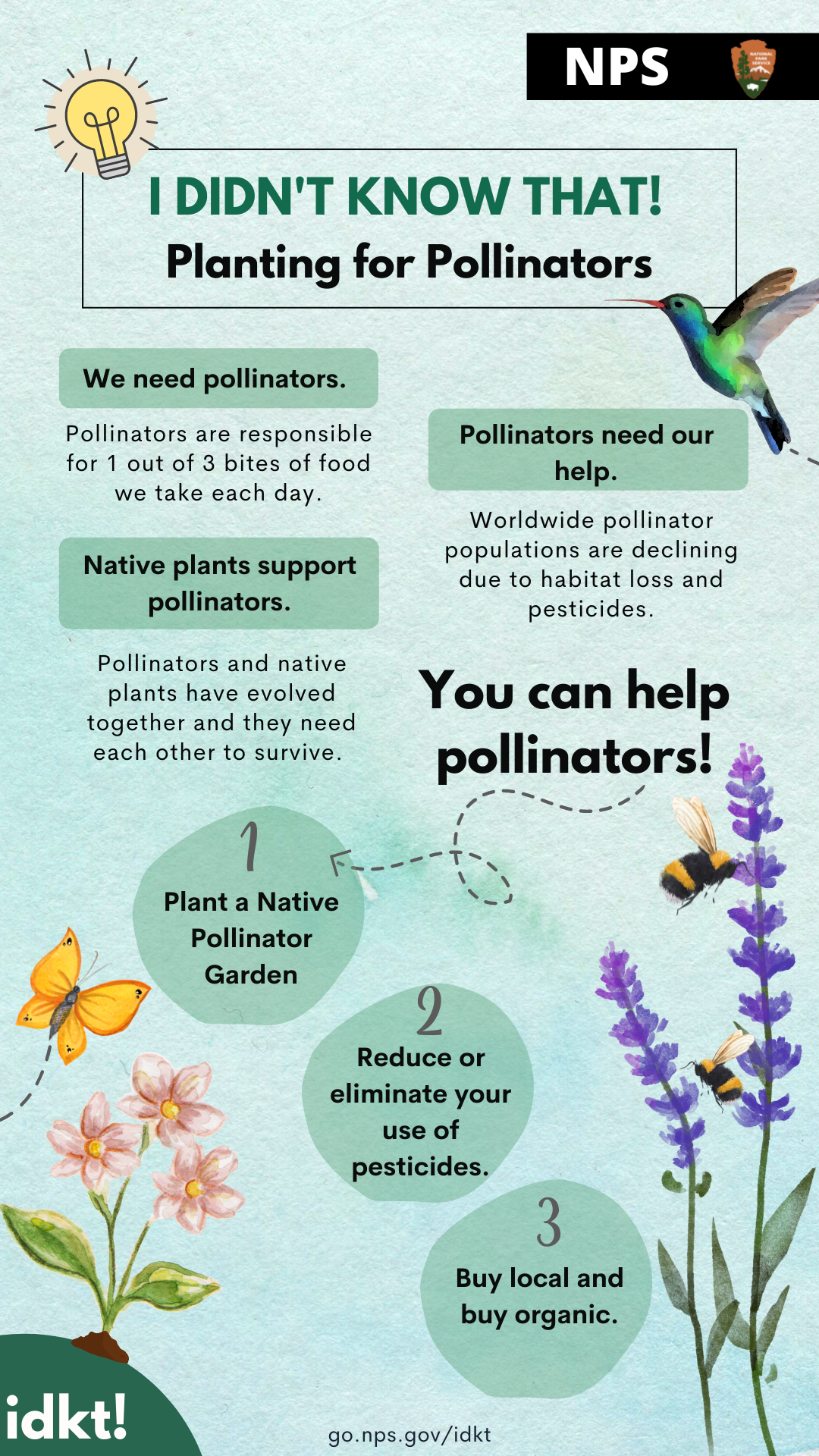Last updated: December 23, 2024
Article
I Didn't Know That!: Planting for Pollinators

After a long winter, it’s finally spring! The snow is melting, the trees are budding, the birds are singing. You know what that means... it’s time to plan your garden! Before you hop online for planning inspiration, think about starting a bit closer to home—with native plants!
Pollinators are responsible for 1 out of 3 bites of food we take each day. They are essential for the health of our ecosystems and the health of many of our food crops. However, pollinator populations are declining worldwide largely due to habitat loss and pesticide poisoning. By creating a pollinator-friendly garden full of native plants, you can help pollinators in your area.

NPS
How Do Native Plants Help Pollinators?
Pollinators need native plants and native plants need pollinators. When pollinators feed on the nectar or pollen in flowers, they brush against pollen. This pollen will stick to the pollinator’s body, and they will bring it with them to the next flower they visit. This pollinator-plant relationship evolved over time. Flowers evolved to be more enticing to certain pollinators and pollinators evolved to better feed on the flowers they visit. Some of these pollinator-plant relationships are so exclusive that they often need specific species to feed on or to be pollinated by. Non-native plants may be inedible to pollinators or may not meet pollination needs.
Bonus!
Native plants are best adapted to your local area’s climate, growing seasons, and soils. That means native plants are almost always less work to keep alive! So, if you struggle with your green thumb, native plants might be your gateway into gardening.
What You Can Do
Plant a pollinator garden with the help of these Ecoregional Native Pollinator Garden Recipe Cards. The cards contain everything you need to create your own at-home pollinator garden full of native plants that support local pollinators. With easy-to-follow steps, options across growing seasons, and resources for support, you’ll be on your way to butterfly bliss in no time.
Reduce or eliminate your use of pesticides. Pesticides, especially insecticides, are one of the biggest problems for pollinators. Learn how to solve your pest problems without pesticides and get tips on how to use and dispose of pesticides properly.
Buy organic and buy local. Organic crops use fewer pesticides, reducing the risk to pollinators. Buying local reduces carbon emissions and supports local farmers who provide habitat for pollinators.

Pass It On!
Did you learn something new? Pass it on! Protecting our ecosystems is a job for us all, but there’s no way for everyone to be an expert in everything. That’s why sharing knowledge is so important! The next time you see a fellow gardener reaching for a non-native plant, you can fill them in and assure them it’s ok to admit — “I didn’t know that!”
Download or screenshot this card to share with a friend or help you remember why planting for pollinators is so important. Thank you for helping protect pollinators with us!
Check out other I Didn't Know That! topics.
We need pollinators. Pollinators are responsible for 1 out of 3 bites of food we take each day.
Pollinators need our help. Worldwide pollinator populations are declining due to habitat loss and pesticides.
Native plants support pollinators. Pollinators and antive plants have evolved together and they need each other to survive.
You can help pollinators!
1) Plant a Native Pollinator Garden
2) Reduce or eliminate your use of pesticides.
3) Buy local and organic.
go.nps.gov/idkt

